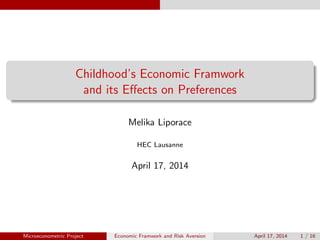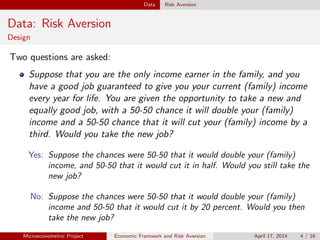This document presents a study examining the influence of one's childhood economic environment on later-life risk aversion. The study uses data on risk attitudes and birth dates from the Health and Retirement Study. Preliminary ordered probit models find that individuals born during World War II report higher risk aversion, while childhood education levels and economic periods have mixed effects. The author discusses extensions, such as analyzing how age during economic crises impacts risk preferences over the life course.















